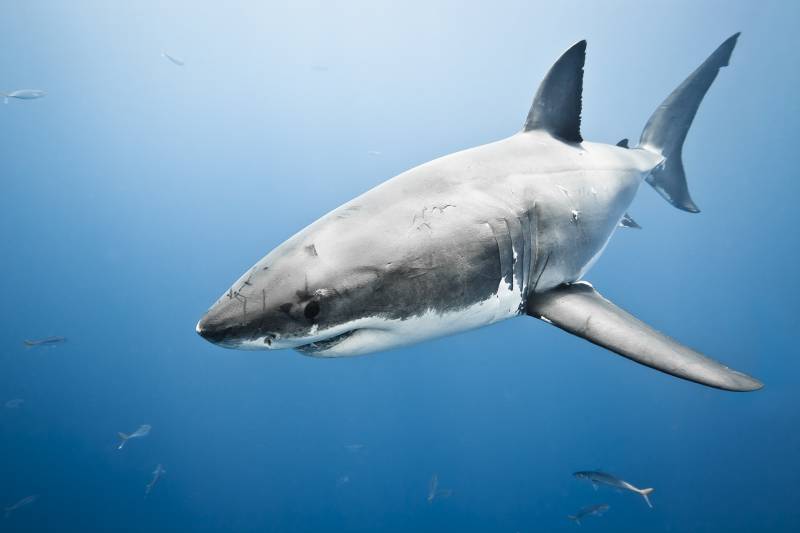BBC
Sydney
A remarkable photograph of the live birth of a thresher shark has cast light on the lives of these elusive, vulnerable fish. The image, taken during a research dive in 2013 and now published in the journal Coral Reefs, is believed to be the first record of a birth in this species.
Lead researcher Dr Simon Oliver from the University of Chester told BBC News that this was also ‘the first record of any oceanic species giving birth’. He added that seeing the image was one of the most exciting moments in his career. ‘We were doing a standard survey - out every day, making observations, ‘ Dr Oliver recalled.
‘One of [our team] is a photographer - Attila Kaszo. He took the picture of the shark, and when he processed the image and showed it to me, I freaked out.’ Dr Simon Thorrold, a senior scientist from Woods Hole Oceanographic Institution in Massachusetts, US, described the photograph, which has now been published in the journal Coral Reefs, as ‘amazing’.
‘I have never seen a comparable image for any other pelagic shark,’ he told BBC News. ‘It may well be, or at least the first time that the event has been photographed, but this is always difficult to say definitively.’
He added, though, that he thought the image was of ‘limited importance’ in terms of shark conservation. Dr Oliver, who studies the thresher sharks at a seamount undersea mountain in the Philippines, says it shows how important the study site to this vulnerable species.
This particular seamount is a shark ‘cleaning station’ - the sharks go there to have parasites nibbled away by smaller fish called cleaner wrasse. Dr Oliver explained: ‘It looks like this area is not just a cleaning station, which is already massively essential, it’s also serving as a pupping ground.
‘We’ve seen lots of pregnant females there, so I don’t think this is a one-off.’ He and his colleagues want the seamount designated as a marine protected area.
Friday, April 19, 2024
Rare shark birth captured on camera

No damage to Iranian nuclear sites after Israeli airstrikes, says UN nuclear watchdog
12:50 PM | April 19, 2024
Ch Shafay visits Directorate of Consumer Protection Council
April 19, 2024
ECP reviews arrangements for by-elections in Punjab
April 19, 2024
Punjab’s price control initiative: A welcome step
12:33 PM | April 19, 2024
A Tense Neighbourhood
April 19, 2024
Dubai Underwater
April 19, 2024
X Debate Continues
April 19, 2024
Hepatitis Challenge
April 18, 2024
IMF Predictions
April 18, 2024
Kite tragedy
April 19, 2024
Discipline dilemma
April 19, 2024
Urgent plea
April 19, 2024
Justice denied
April 18, 2024
AI dilemmas unveiled
April 18, 2024
ePaper - Nawaiwaqt
Advertisement
Nawaiwaqt Group | Copyright © 2024





